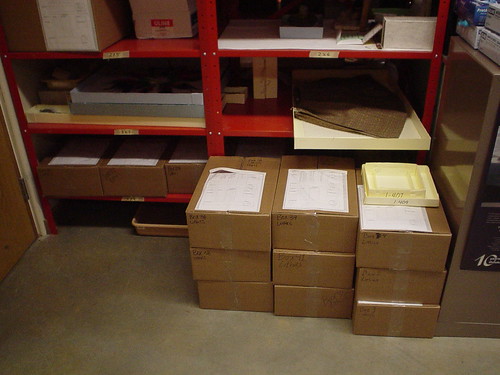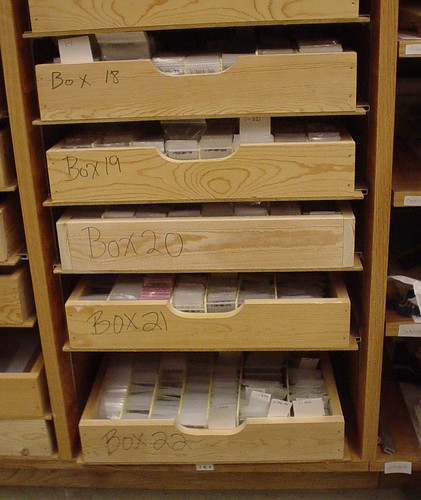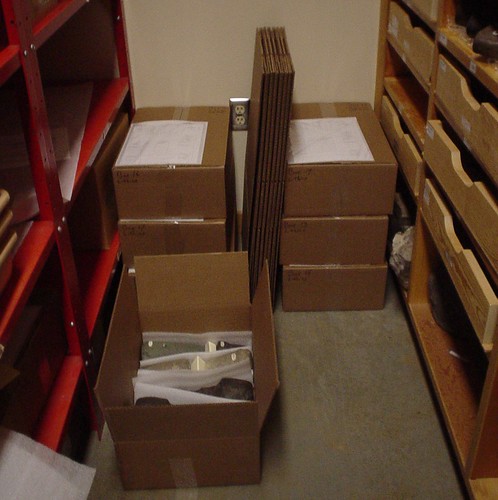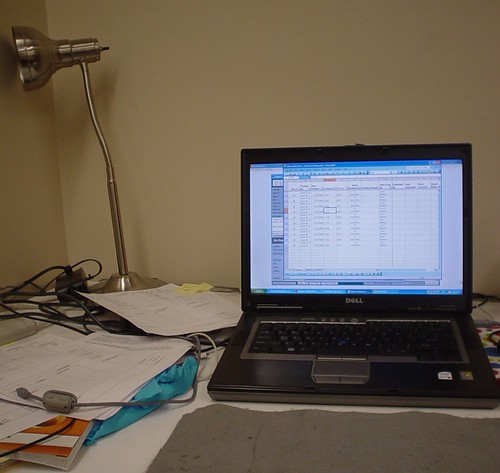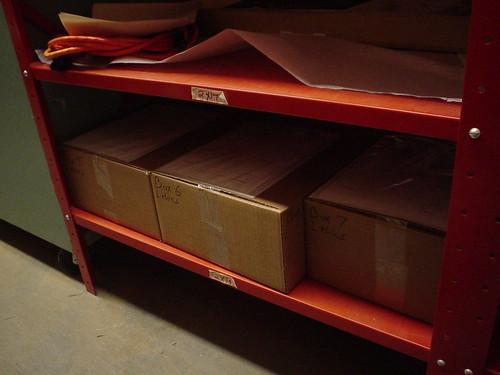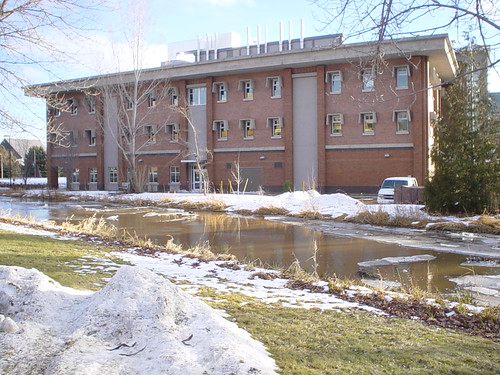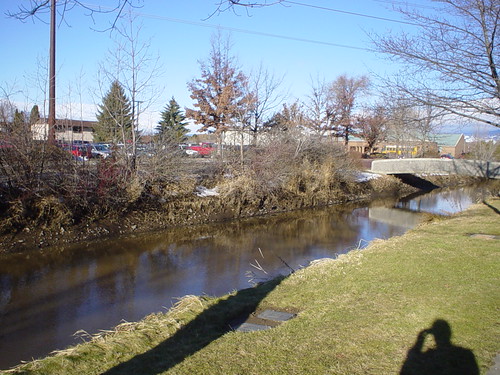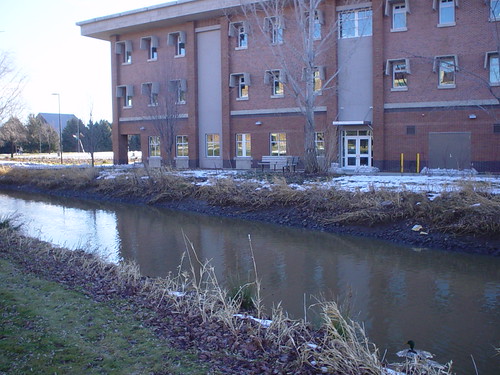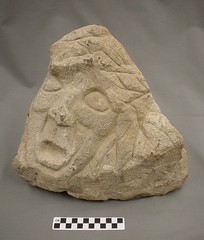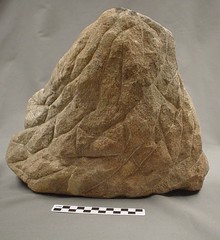
You can see our high tech photo background above. Another intern is working on creating surfaces so we can move delicate objects like this Bear mask safely.

The cedar bark used for the mane is extremely fragile and small losses occur whenever it is picked up. The board minimizes the need to handle the mask directly and keeps any lost bark with the mask. Other masks have many fragile parts which need to be stabilized as much as possible (so the vibrations during movement don't cause damage):
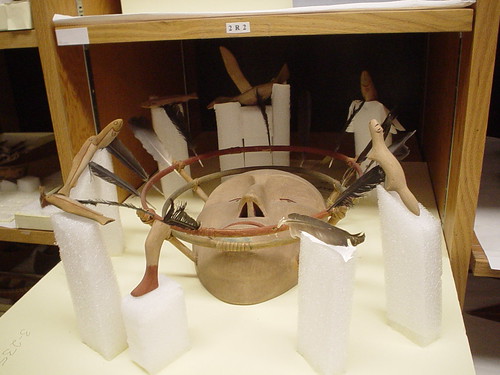
And in the midst of this, we're still packing. And we have the gaps in the storage to prove it!
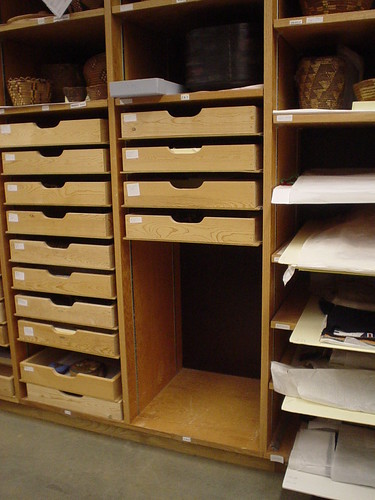
That's the former home of about 6000 pieces of chipped stone. Now all tidily shrink wrapped and ready to head over to Dean Hall. And our box stack keeps growing and growing. (This is one of three box stacks - don't let it deceive you.)
